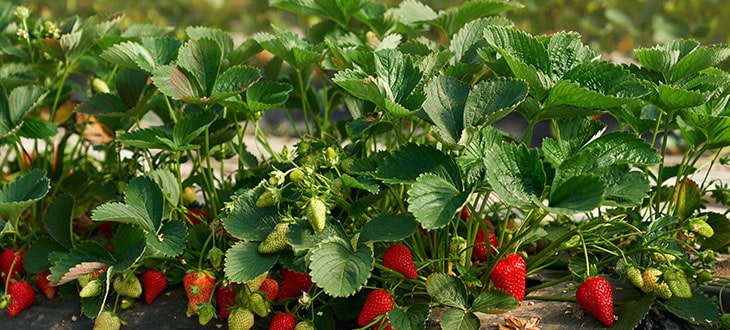What does strawberry plant look like?
Do you want to know what the strawberry plant looks like? Find out how to identify strawberry plants and discover more interesting facts about this plant below.
Everyone loves strawberries. These delicious fruits are rich in vitamins, minerals, and antioxidants, and their consumption has numerous benefits for the body.
Strawberries are an important commercial fruit crop cultivated on a large scale in all temperate world regions.
These fruits are often eaten fresh, being highly prized for their pleasant taste and specific aroma. They are also used to make jams, syrups, chocolates, cakes, and many deserts.
But what plant produces these extraordinary fruits?
Strawberries are produced by the plant with the same name as the fruit. More precisely, strawberries (the fruits) are produced by strawberry plants.
The species that produce the large, juicy, aromatic, and sweet fruits we all love are generally called “garden strawberries,” or simply “strawberries.” They are scientifically known as “Fragaria × ananassa” which are hybrid species of the genus Fragaria, family Rosaceae.
This genus includes more than 20 species of strawberries and many hybrids and cultivars.
Further, we will present to you the characteristics of the strawberry plant, along with some pictures to help you identify it effortlessly.
Contents
Strawberry plant identification
Strawberry plants are pretty easy to identify, having several distinctive features even when the plant is young.
Obviously, the easiest time to recognize this plant is when it bears fruit. Otherwise, you will have to look for other aspects.
Strawberry is a perennial herbaceous plant with a short underground stem. It forms a dense “crown” at the surface of the soil and develops a superficial root system at the bottom.
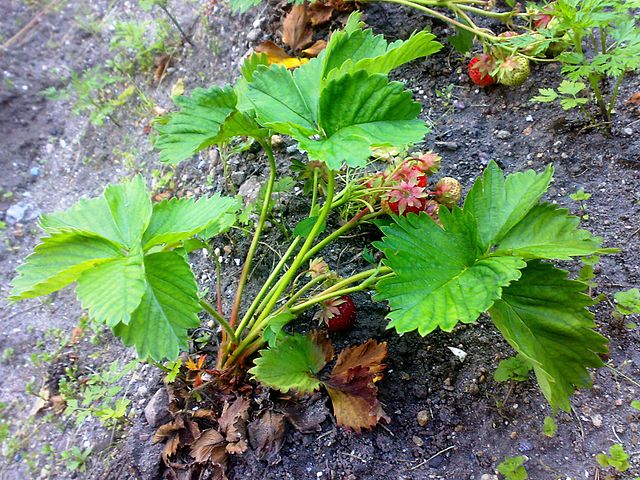
The roots of the strawberry plant extend to a depth of about 12 inches (30 cm), both horizontally and vertically.
You may also notice the presence of stolons when the plant is old enough.
Strawberries propagate through stolons, also known as “runners.” These are long, leafless, modified stems that develop from the vegetative buds located at the base of the plant and spread over the surface of the soil, establishing roots and producing new plants from nodes (called “daughter plants”).
Each plant can send multiple runners, so these plants can multiply really fast.
The leaves of strawberry plants are compound with three rounded leaflets, each having deeply serrated margins and attaching to the crown via long stems. They can have either a light or dark green color, depending on the age of the leaf.

A plant forms multiple flowers from buds developed the previous year. Each flower usually has five white petals but both the number and their color may depend on the cultivar. The center of the flowers is greenish-yellow, and it holds the stigmas and anthers (the part of a stamen that contains the pollen).
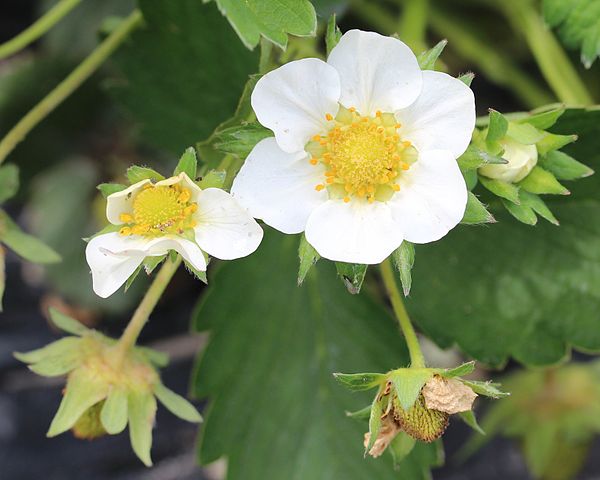
Strawberry fruits are juicy, sweet, and have various shapes ranging from oblate to long-conic. The most common varieties produce fruits that have a bright red color. However, the fruit size, taste, shape, and color may vary from one cultivar to another.
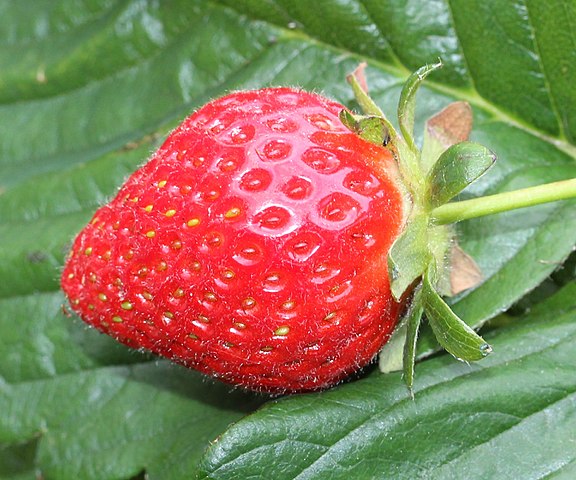
The many greenish-yellow dots we see on the outside of a strawberry and call “seeds,” are in fact called “achenes” from a botanical standpoint and each of them is actually a minuscule fruit that contains a seed.
Despite their name, strawberries are not, from a botanical standpoint, berries but aggregate accessory fruits.
Are any strawberries look-alikes?
There are several plants that can be mistaken with strawberry plants at certain stages of their development. So, below we will mention a few.
1. Wild Strawberry (Fragaria Vesca)
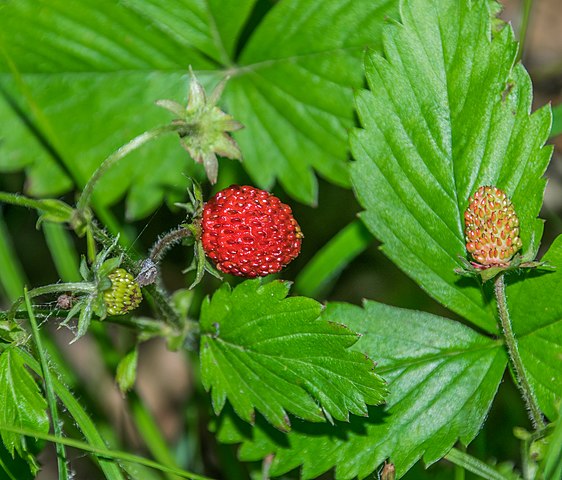
Wild Strawberry (Fragaria vesca) is a perennial plant in the Rosaceae family. It is also commonly known under the names woodland strawberry or European strawberry.
As its common name suggests, this wild version of cultivated strawberries grows naturally throughout many regions of the Northern Hemisphere and produces edible fruits. It can be mostly found in mixed deciduous forests.
Both the foliage and the fruits of wild strawberries are very similar to that of garden strawberries. However, the fruits of these wild plants are smaller than that of the common strawberries and have a stronger aroma.
2. Mock Strawberry (Potentilla Indica)
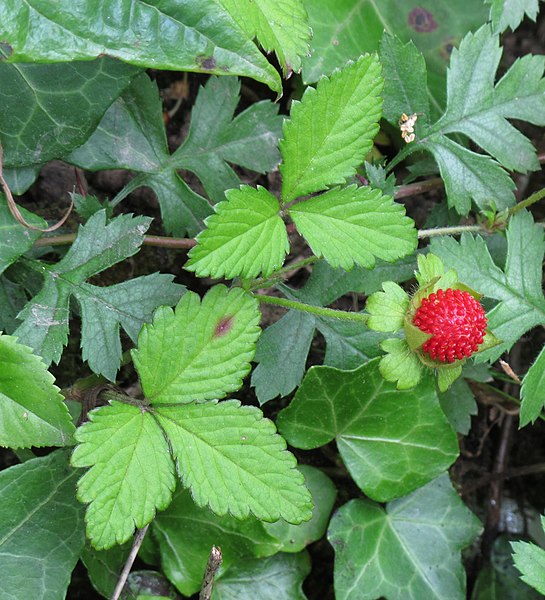
Mock strawberry is a plant in the family Rosaceae that may be easily confused with strawberries. It is also commonly known as false strawberry, backyard strawberry, or Indian strawberry.
It is native to parts of Asia but was introduced to many countries as an ornamental plant.
Mock strawberry has similarities with strawberries in foliage and fruit.
Unlike the white petals of the flowers of the common strawberry plants, the ones of Potentilla indica are yellow.
Although these two plants may be mistaken for each other, the fruit of mock strawberry is fortunately labeled by many sources as non-toxic to humans, but less tasty.
3. Strawberryleaf Cinquefoil (Potentilla Sterilis)

Strawberryleaf cinquefoil, also known as barren strawberry, is a perennial flowering plant in the rose family, Rosaceae, and is native to Europe.
The foliage of this plant is very similar to that of strawberry plants.
A few differences between Potentilla sterilis and the strawberry plants include the fact that this plant does not form fleshy fruits, doesn’t grow as large, and its flowers are tinier. Its foliage may also be darker and less glossy than that of true strawberry plants.
Final Word
Now you should have a better idea of what a strawberry plant looks like.
Although there are several other look-alikes of strawberries, we hope you can quickly identify any strawberry plant in any of its development stages with the information provided in this article.

